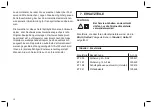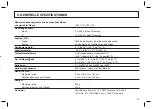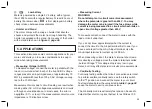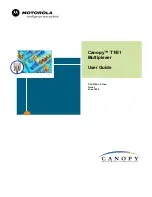
26
2. MULTIMETER sAFETY
Before using the meter, read the following safety informati-
on carefully. In this manual the word „WARNING“ is used
for conditions and actions that pose hazards to the user;
the word „CAUTION“ is used for Conditions and actions
that may damage your meter. The symbols shown in
figure
2, page 26
are used internationally to denote the electrical
functions and conditions indicated.
• Avoid working alone.
• Inspect the test leads for damaged insulation or exposed
metal. Check test lead continuity. Damaged leads should
be replaced.
• Be sure the meter is in good operating condition. During
a continuity test, a meter reading that goes from
overload (
) to 0 generally means the meter is
working properly.
• Select the proper function and range for your measurement.
WARNING
To avoid electrical shock, use caution when working
above 60 V DC or 25 V AC RMs. such voltages pose a
shock hazard.
• Disconnect the live test lead before disconnecting
the common test lead.
Figure 2.
International Electrical symbol
Dangerous voltage
Ground
AC alternating current
See explanation
in manual
DC direct current
Double insulation
(Protection Class II)
Either DC or AC
Fuse
• FolIow all safety procedures for equipment being tested.
Disconnect the input power and discharge all high
voltage capacitors through a protective impedance
before testing in the Ω and
functions.
• When making a current measurement, turn the power
off before connecting the meter in the circuit.
• Check meter fuses before measuring current transformer
secondary or motor winding current. (See „Fuse Test“ in
the „MAINTENANCE“ section.) An open fuse may allow
high voltage build-up, which is potentially hazardous.
3. GETTING sTARTED QUICKLY
Examine the meter carefully, familiarizing yourself with the
layout of the input terminals, rotary switch, pushbuttons
and display. Notice the WARNING information’s engraved
















































